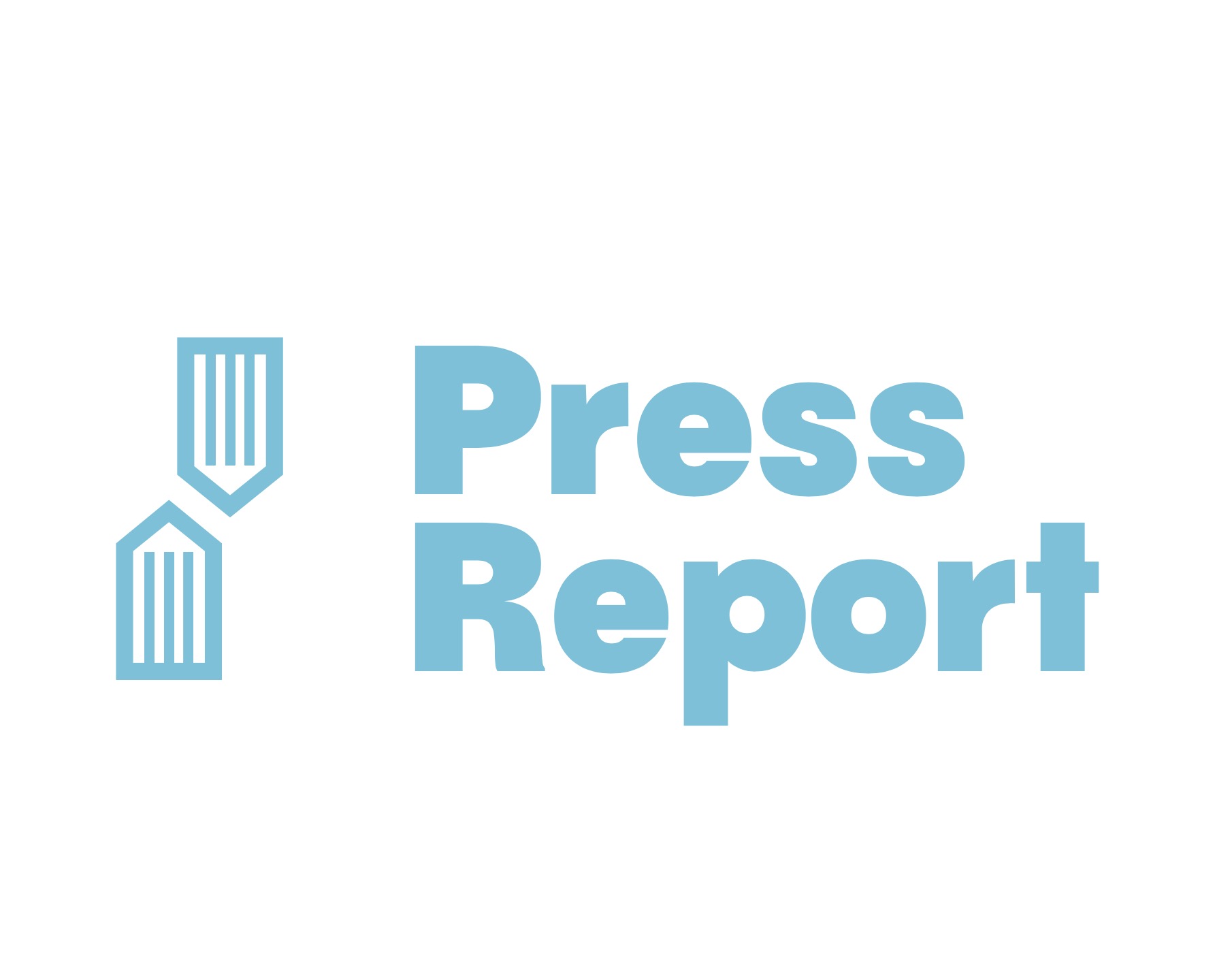AI News
Unleashing Forward-Looking Active Retrieval Augmented Generation

Join us as we explore the topic of Forward-Looking Active Retrieval Augmented Generation (RAG). This piece examines the innovative framework of RAG which combines the strengths of Large Language Models (LLMs) with traditional Information Retrieval (IR) techniques. Launched by Facebook AI Research, RAG has revolutionized the domain of Natural Language Processing (NLP) and has paved the way for seamless AI interactions.
Key Takeaways:
- RAG merges retrieval-based and generative models, enhancing the capabilities of LLMs.
- External data plays a crucial role in RAG, expanding the knowledge base of LLMs.
- RAG offers several advantages over traditional generative models, including improved performance and transparency.
- RAG encompasses diverse approaches for retrieval mechanisms, allowing customization for different needs.
- Implementing RAG requires ethical considerations, such as addressing bias and ensuring transparency.
Understanding Retrieval Augmented Generation
Retrieval Augmented Generation (RAG) is a transformative framework that merges retrieval-based and generative models, revolutionizing the field of Natural Language Processing (NLP). By integrating external knowledge sources, RAG enhances the capabilities of Large Language Models (LLMs) and enables them to generate contextually rich and accurate responses. This breakthrough approach addresses the limitations of traditional LLMs and paves the way for more intelligent and context-aware AI-driven communication.
In a typical RAG workflow, the model analyzes user input and retrieves relevant information from external data sources such as APIs, document repositories, and webpages. By tapping into these sources, RAG models expand their knowledge base and gain access to the latest information. This integration of external data empowers LLMs to generate responses that are informed by real-time data, ensuring accuracy and contextual relevance in their output.
One of the key advantages of RAG over traditional generative models is its ability to overcome the context-window limit of language models. While LLMs are typically constrained by a limited window of text, RAG leverages external knowledge to provide a broader context for generating responses. This enables a more comprehensive understanding of user queries and leads to more accurate and meaningful interactions with AI systems.
RAG also offers transparency and explainability in its output. By surfacing the sources used to generate the text, RAG models provide insights into the knowledge base they rely on. This transparency enhances user trust and encourages responsible AI implementation. Additionally, RAG’s integration of external data sources reduces the risk of biased or fabricated information, further ensuring the reliability and fairness of the generated text.
Understanding Retrieval Augmented Generation
Retrieval Augmented Generation (RAG) is a revolutionary approach that combines retrieval-based and generative models to enhance the capabilities of Large Language Models (LLMs). By integrating external knowledge sources, RAG enables LLMs to generate contextually rich and accurate responses. This integration of external data expands the knowledge base of LLMs, overcoming the limitations of traditional language models.
“RAG allows LLMs to tap into external knowledge sources, providing a broader context for generating responses.”
When utilizing RAG, the model analyzes user input and retrieves relevant information from sources such as APIs, document repositories, and webpages. By leveraging external data, RAG models can provide up-to-date and accurate responses. They overcome the context-window limitation of traditional language models by considering a broader range of information, leading to more context-aware and reliable AI-driven communication.
In addition to its ability to tap into external knowledge, RAG also offers transparency and explainability. By surfacing the sources used to generate the text, RAG models provide insights into the knowledge base they rely on. This transparency fosters trust and ensures responsible AI implementation. RAG’s integration of external data sources also reduces the risk of biased or fabricated information, making the generated text more reliable and fair.
The Power of External Data
Retrieval Augmented Generation (RAG) harnesses the power of external data to enhance the capabilities of Large Language Models (LLMs). By tapping into a wide range of knowledge sources, RAG models are able to generate contextually rich and accurate responses that are informed by the latest information. This ability to access external data sets RAG apart from traditional generative models and opens up new possibilities for more intelligent and context-aware AI-driven communication.
When it comes to external data, RAG models have the ability to leverage a variety of sources. APIs, real-time databases, document repositories, and webpages are just a few examples of the vast array of knowledge sources that RAG can tap into. By accessing these sources, RAG models can expand their knowledge base, improve the accuracy of their responses, and ensure that the generated text remains contextually relevant.
The incorporation of external data is particularly beneficial for RAG models as it helps overcome the limitations of relying solely on pre-trained language models. By accessing up-to-date information from external sources, RAG models can provide users with the most relevant and accurate responses, even in dynamic and rapidly changing domains. This ability to tap into external data sources is what truly sets RAG apart and makes it a powerful tool in the field of AI and NLP.
| Benefits of External Data in RAG | Example |
|---|---|
| Expanded knowledge base | Accessing APIs, databases, and webpages allows RAG models to tap into a vast array of knowledge sources, expanding their understanding of various topics. |
| Improved response accuracy | By leveraging external data, RAG models can provide users with responses that are informed by the latest information, ensuring accuracy and relevance. |
| Contextual relevance | External data enables RAG models to generate responses that are contextually relevant, taking into account the specific queries or inputs from users. |
Overall, the power of external data in Retrieval Augmented Generation is undeniable. By accessing a wide range of knowledge sources, RAG models can enhance their understanding, improve response accuracy, and ensure that the generated text remains contextually relevant. This ability to tap into external data sets RAG apart from traditional generative models and makes it a valuable tool in various domains.
Benefits of Retrieval Augmented Generation (RAG)
Retrieval Augmented Generation (RAG) offers several advantages over traditional generative models. Let’s explore some of the key benefits of implementing RAG in AI-driven systems:
Improved Knowledge Acquisition
RAG allows for easy acquisition of knowledge from external sources, minimizing the need for extensive training and manual data collection. By leveraging APIs, real-time databases, and webpages, RAG models can access a wide range of information to enhance their understanding and generate more accurate responses. This not only saves time and resources but also ensures that the generated text is up-to-date and informed by the latest information.
Enhanced Performance and Reduced Hallucination
By leveraging multiple sources of knowledge, RAG models can improve their performance and reduce the occurrence of hallucinations or fabricated information. Traditional generative models often struggle with generating accurate and contextually relevant responses, leading to unreliable outputs. RAG overcomes these limitations by incorporating retrieval-based mechanisms, which enable the model to retrieve relevant information and generate more precise and context-aware responses.
Transparency and Explainability
RAG provides transparency and explainability by surfacing the sources used to generate the text. This allows users to understand the context and credibility of the information presented to them. By knowing which data sources have been accessed, users can have confidence in the accuracy and reliability of the generated text. This transparency also facilitates accountability, as it enables users to evaluate the information and challenge any biases or errors that may arise.
In summary, Retrieval Augmented Generation (RAG) offers significant benefits over traditional generative models. It enables easy acquisition of knowledge from external sources, improves performance and reduces hallucination, and provides transparency and explainability. These advantages make RAG a powerful framework for developing intelligent and context-aware AI-driven systems.
Diverse Approaches in RAG
Retrieval Augmented Generation (RAG) encompasses a variety of approaches and methodologies that enhance the accuracy, relevance, and contextual understanding of generated responses. These diverse approaches enable RAG models to leverage external knowledge sources and provide meaningful interactions. Let’s explore some of the key methodologies:
1. Simple Retrieval
In this approach, RAG models retrieve relevant information from external sources based on user input. It involves matching keywords or phrases to retrieve the most suitable response. Simple retrieval is a straightforward and effective method for generating contextual responses.
2. Map Reduce
Map reduce is a technique used in RAG to process large amounts of data by dividing it into smaller chunks, processing them in parallel, and then combining the results. This approach improves efficiency and scalability, making it ideal for handling complex queries and large-scale retrieval tasks.
3. Map Refine
The map refine approach helps improve the accuracy of generated responses by refining the retrieved information. It involves applying additional filters and refining techniques to ensure that the retrieved data is highly relevant and contextually appropriate.
4. Map Rerank
In map rerank, the retrieved information is ranked based on relevance and importance. This approach uses ranking algorithms to determine the most suitable response based on contextual factors and user preferences. It ensures that the generated responses are not only accurate but also aligned with the user’s intent.
5. Filtering
Filtering is a technique used in RAG to remove irrelevant or noisy information from the retrieved data. It helps improve the quality of generated responses by ensuring that the information used for generation is reliable, accurate, and contextually appropriate.
6. Contextual Compression
Contextual compression is a methodology that aims to compress the retrieved information while preserving its contextual relevance. It helps generate concise and contextually rich responses, improving the overall efficiency and effectiveness of RAG models.
7. Summary-based Indexing
Summary-based indexing involves creating a summary or index of the retrieved information to facilitate efficient retrieval and generation. It enables faster processing and reduces resource requirements, making it a valuable technique for large-scale RAG implementations.
These diverse approaches in RAG provide a range of methodologies to enhance the accuracy, relevance, and context of generated responses. By leveraging these techniques, RAG models can generate contextually rich and accurate responses that meet the needs of users in various domains.
| Methodology | Description |
|---|---|
| Simple Retrieval | Retrieves relevant information based on user input through keyword matching. |
| Map Reduce | Divides and processes large amounts of data in parallel to improve efficiency and scalability. |
| Map Refine | Refines retrieved information using additional filters and techniques to ensure relevance. |
| Map Rerank | Ranks retrieved information based on relevance and contextual factors to generate suitable responses. |
| Filtering | Removes irrelevant or noisy information from retrieved data to improve response quality. |
| Contextual Compression | Compresses retrieved information while preserving contextual relevance for efficient generation. |
| Summary-based Indexing | Creates a summary or index of retrieved information for faster processing and reduced resource requirements. |
Ethical Considerations in RAG
As we delve into the world of Retrieval Augmented Generation (RAG), it is crucial to address the ethical considerations that arise in its implementation. The power and potential of RAG can be harnessed to foster fair and unbiased AI-driven communication. However, to ensure the responsible use of this technology, we must be mindful of certain issues.
Privacy and Bias Concerns
One of the foremost ethical considerations in RAG is the protection of user privacy. As RAG models tap into external knowledge sources, it is essential to safeguard personal information and ensure that user data is not misused or compromised. Additionally, bias in AI-generated responses must be rigorously monitored and mitigated. By actively reducing bias and maintaining privacy standards, we can uphold fairness and protect user trust.
Regular Evaluation and Transparency
Regular evaluation of RAG models is essential to assess their accuracy and minimize the occurrence of hallucinations or fabricated information in generated text. Transparent practices that provide users with access to the sources used to generate the text enhance credibility and accountability. By encouraging responsible development and constant scrutiny, we can build trustworthy AI systems that prioritize accuracy and transparency.
In conclusion, while Retrieval Augmented Generation (RAG) opens up exciting possibilities in AI-driven communication, it must be implemented with careful consideration of ethical concerns. By addressing issues related to privacy, bias, evaluation, and transparency, we can ensure that RAG aligns with ethical standards and provides users with reliable and contextually relevant responses.
Table: Ethical Considerations in RAG
| Considerations | Description |
|---|---|
| Privacy | Protecting user data and ensuring it is not misused or compromised when accessing external knowledge sources. |
| Bias | Monitoring and mitigating bias in AI-generated responses to ensure fairness and avoid discrimination. |
| Evaluation | Regularly evaluating RAG models to assess accuracy and minimize the occurrence of hallucinations or fabricated information. |
| Transparency | Providing users with access to the sources used to generate the text in order to enhance credibility and accountability. |
Applications of Retrieval Augmented Generation (RAG)
Retrieval Augmented Generation (RAG) has revolutionized various domains and opened up a world of possibilities for AI-driven applications. By leveraging external data sources and combining retrieval-based and generative models, RAG has become a powerful tool in the development of intelligent systems. Let’s explore some of the key applications and use cases of RAG.
1. Generative Search Frameworks
RAG has significantly enhanced the capabilities of search engines by enabling them to provide more contextually relevant and accurate results. By leveraging external knowledge sources, RAG-powered search frameworks like Bing Chat have transformed the way users interact with search engines. These frameworks analyze user queries, retrieve information from various sources, and generate comprehensive and context-aware responses.
2. Chatbots and Virtual Assistants
RAG is widely used in the development of chatbots and virtual assistants to create more intelligent and natural conversations. By tapping into external knowledge sources, RAG-powered chatbots can provide accurate and up-to-date information to users. Whether it’s answering questions, providing recommendations, or assisting with tasks, RAG enables chatbots and virtual assistants to deliver more contextually relevant and helpful responses.
3. Content Generation
RAG has also found applications in content generation, particularly in areas such as article writing, summarization, and translation. By combining the power of retrieval-based models with generative models, RAG can generate high-quality and contextually rich content. RAG-powered systems like Perplexity have been used to automatically generate informative and coherent articles on various topics, saving time and effort for content creators.
These are just a few examples of the wide range of applications of Retrieval Augmented Generation (RAG). With its ability to leverage external knowledge sources and generate contextually rich and accurate responses, RAG is transforming the way AI systems interact with users and provide value in various domains.

The Future of RAGs and LLMs
The future of Retrieval Augmented Generation (RAG) and Large Language Models (LLMs) is brimming with possibilities and advancements. As LLMs continue to evolve, with improved performance and reduced model size, the scalability of RAG-powered systems will increase, driving their adoption in a wide range of commercial applications.
RAG’s ability to query external databases and access relevant information from diverse sources will revolutionize the capabilities of LLMs. This integration of external knowledge will make LLMs more context-aware and reliable, enabling them to generate responses that are not only accurate but also aligned with user intent.
Furthermore, ongoing research and development in the field of RAG will lead to enhancements in retrieval mechanisms and methodologies. By exploring diverse approaches such as map reduce, map refine, map rerank, and more, developers can refine RAG models to deliver even more accurate and contextually relevant responses.
Advancements in AI and NLP
“The future of AI lies in the synergy between retrieval-based and generative models. RAG is at the forefront of this revolution.”
With advancements in AI and NLP, the future of RAG will witness significant improvements in areas like bias mitigation and privacy considerations. Researchers and developers are actively working towards evaluating RAG models for accuracy and minimizing the occurrence of hallucinations or fabricated information.
Transparency and accountability are crucial aspects of future RAG systems. Users should have access to the sources used by the models to generate text, allowing them to verify the credibility of the information and fostering trust in AI-driven communication.
In conclusion, the future of RAGs and LLMs holds immense potential. As LLMs become more refined and RAG-powered systems continue to evolve, we can expect AI interactions to become more seamless, context-aware, and reliable, setting new standards for intelligent communication in various domains.
Utilizing LangChain for Enhanced Retrieval-Augmented Generation (RAG)
When it comes to implementing Retrieval Augmented Generation (RAG) and harnessing its power in AI systems, developers can benefit from the convenience and simplicity offered by the LangChain Python library. LangChain provides a high-level interface for working with Large Language Models (LLMs), making the integration of RAG into AI applications a straightforward process.
With LangChain, developers can leverage the capabilities of RAG without getting tangled in complex code or struggling with intricate implementation details. The library offers built-in wrappers and utility functions that streamline the workflow, enabling developers to focus on leveraging RAG’s potential rather than grappling with technical intricacies.
One of the key benefits of using LangChain is the ease of working with LLMs. The library abstracts away many of the complexities, allowing developers to tap into the power of RAG with minimal effort. By simplifying the implementation process, LangChain empowers developers to unlock the full potential of RAG and create AI systems that deliver contextually rich and accurate responses.
By utilizing LangChain, developers can leverage the benefits of RAG in their AI-driven applications. Whether it’s building chatbots, virtual assistants, content generation systems, or any other RAG-powered system, LangChain provides a user-friendly and efficient solution for implementing RAG and unleashing the full potential of Large Language Models.

Enhancing RAG Implementation with LangChain
LangChain offers several key features that enhance the implementation of Retrieval Augmented Generation (RAG). Some of the notable benefits include:
- Simplified integration of LLMs: LangChain abstracts away the complexities of working with Large Language Models, making it easier for developers to leverage the power of RAG.
- Streamlined workflow: The library provides built-in wrappers and utility functions that streamline the implementation process, reducing development time and effort.
- Enhanced performance: By leveraging LangChain’s capabilities, developers can optimize the performance of RAG models, ensuring contextually rich and accurate responses.
- Improved scalability: LangChain enables developers to scale RAG-powered applications efficiently, supporting the growth and expansion of AI systems.
With these benefits and more, LangChain empowers developers to implement RAG effectively and create AI systems that deliver contextually rich and accurate responses.
| Key Features of LangChain | Benefits |
|---|---|
| Simplified integration of LLMs | Reduces complexity and technical challenges |
| Streamlined workflow | Increases development efficiency and reduces time-to-market |
| Enhanced performance | Delivers contextually rich and accurate responses |
| Improved scalability | Supports the growth and expansion of RAG-powered applications |
Build Industry-Specific LLMs Using Retrieval Augmented Generation
Retrieval Augmented Generation (RAG) presents a powerful tool for developing industry-specific Large Language Models (LLMs) that can provide accurate insights and facilitate informed decision-making in various domains. By integrating vector search capabilities with LLMs, RAG enables AI systems to make industry-specific informed decisions, delivering responses that are tailored to the unique requirements of specific sectors.
RAG Implementation Considerations
Implementing RAG for industry-specific LLMs involves several important considerations. Document chunking, for example, is a crucial step in processing and organizing industry-specific data to ensure efficient retrieval and generation. By breaking documents into smaller, manageable pieces, RAG models can analyze and retrieve relevant information more effectively, resulting in more accurate and contextually rich responses.
Another consideration is the choice of similarity metrics. These metrics determine how closely the retrieved information aligns with user queries, ensuring that the generated responses are both relevant and reliable. Selecting appropriate similarity metrics ensures that the industry-specific LLMs powered by RAG provide meaningful interactions and valuable insights to users in specific domains.
Enhancing Response Quality
To enhance the quality of responses in specific industry settings, it is important to carefully design the model architecture. By fine-tuning the architecture to suit the characteristics and nuances of the industry-specific data, RAG models can generate highly accurate and contextually appropriate responses. Additionally, by incorporating techniques to avoid hallucinations or fabricated information, the reliability of the generated text can be further improved.
Overall, leveraging Retrieval Augmented Generation (RAG) for industry-specific LLMs opens up new possibilities for delivering accurate insights and informed decision-making. By understanding and implementing the necessary considerations, organizations can harness the power of RAG to build AI systems that provide contextually relevant responses and drive innovation in their respective industries.
| Industry | Applications |
|---|---|
| Finance | – Financial forecasting – Investment analysis – Risk assessment and management |
| Healthcare | – Medical diagnosis – Patient care recommendations – Drug discovery and development |
| Retail | – Demand forecasting – Customer segmentation – Pricing optimization |
| Manufacturing | – Quality control – Supply chain optimization – Predictive maintenance |
Output
The output of Retrieval Augmented Generation (RAG) is contextually rich and human-like text. By analyzing user input and leveraging external data sources, RAG models generate responses that are accurate, coherent, and align with user intent. These responses provide users with meaningful interactions and reliable AI-driven communication.
RAG models are designed to tap into external knowledge sources, such as APIs, real-time databases, and webpages, to enhance their understanding and generate contextually relevant responses. This ability to retrieve information from diverse sources allows RAG models to provide accurate and up-to-date information to users.
Furthermore, RAG models address the limitations of traditional generative models by incorporating retrieval-based techniques. By retrieving relevant information from external sources, RAG models can overcome the context-window limit of language models and generate more comprehensive and accurate responses.
Example Output:
User Input: “What is the capital of France?”
RAG Retrieval: “Paris is the capital of France.”
RAG Generation: “Paris, the City of Light, serves as the capital of France.”
By combining retrieval and generation techniques, RAG models provide users with responses that are not only accurate but also contextually aware. This enables more effective and natural interactions between users and AI systems, leading to improved user experiences and increased trust in AI-driven communication.
| Key Features of RAG Output | Benefits |
|---|---|
| Contextually Rich | Provides in-depth and relevant information |
| Human-like | Generates responses that resemble human language |
| Accurate | Based on up-to-date and reliable external sources |
| Coherent | Delivers responses that flow naturally and make sense |
Conclusion
In conclusion, Retrieval Augmented Generation (RAG) is a revolutionary framework that combines the strengths of retrieval-based and generative models, enhancing the capabilities of Large Language Models (LLMs). By integrating external knowledge sources, RAG enables AI systems to generate contextually rich and accurate responses, making interactions more meaningful and reliable. RAG offers several benefits, including easy knowledge acquisition, minimal training costs, improved performance, and transparency.
Implementing RAG can be simplified with libraries like LangChain, which provide a high-level interface for working with LLMs, streamlining the development process. As the advancements in LLMs continue to evolve, coupled with the scalability of RAG, we can anticipate the widespread adoption of RAG-powered systems in various commercial applications.
With its ability to tap into external data sources, RAG holds immense potential for industry-specific applications. By integrating vector search with LLMs, RAG empowers AI systems to make informed decisions in specific domains. However, ethical considerations such as bias and privacy concerns should be addressed to ensure fair and unbiased responses. Transparency and accountability are vital, enabling users to access the sources used in generating the text.
| Advantages of RAG | Applications of RAG | LangChain Benefits |
|---|---|---|
|
|
|
Retrieval Augmented Generation (RAG) is a transformative framework in the field of AI and NLP. By leveraging external knowledge sources, RAG enhances the performance of Large Language Models (LLMs) and provides more context-aware and reliable AI-driven communication. With the help of libraries like LangChain, RAG can be effectively implemented to unlock the full potential of AI systems. As we look towards the future, ongoing advancements in LLMs and the scalability of RAG will further drive the adoption of RAG-powered systems in commercial applications.
References
Here are some key references that provide valuable insights into Retrieval Augmented Generation (RAG) and its implementation:
- “Implementing RAG using Langchain” (source: Twilix)
- “History of Retrieval Augmentation” (source: Retrieval-Augmented Generation for Knowledge-Intensive NLP Tasks)
- “The Rapid Advancements in Large Language Models” (source: Towards Data Science)
These sources delve into the foundations, applications, and advancements in RAG, offering a comprehensive understanding of this transformative framework. Whether you’re interested in implementing RAG using LangChain, exploring the history of retrieval augmentation, or staying updated on the rapid advancements in large language models, these references will provide you with valuable information.
By referring to these sources, you can further delve into the world of Retrieval Augmented Generation (RAG) and stay informed about the latest developments in this exciting field.
FAQ
What is Retrieval Augmented Generation (RAG)?
Retrieval Augmented Generation (RAG) is a groundbreaking approach in AI that combines Large Language Models (LLMs) and traditional Information Retrieval (IR) techniques. It enables AI systems to analyze user input, retrieve relevant information from external data sources, and generate contextually rich and accurate responses.
How does RAG leverage external data?
RAG accesses sources such as APIs, real-time databases, document repositories, and webpages to enrich its understanding. By leveraging external data, RAG expands the knowledge base of LLMs, improves response accuracy, and ensures contextual relevance.
What are the advantages of RAG over traditional generative models?
RAG offers easy acquisition of knowledge from external sources, minimizing training costs and resource requirements. It can leverage multiple sources of knowledge, resulting in improved performance and reduced hallucination. RAG also overcomes the context-window limit of language models and provides transparency and explainability by surfacing the sources used to generate the text.
What are the different approaches in RAG?
RAG encompasses various approaches for retrieval mechanisms, including simple retrieval, map reduce, map refine, map rerank, filtering, contextual compression, and summary-based indexing. Each approach has its own strengths, enhancing the accuracy, relevance, and context of RAG-generated responses.
What ethical considerations should be taken into account when implementing RAG?
Bias and privacy concerns must be addressed to ensure fair and unbiased responses. RAG models should be regularly evaluated for accuracy and to minimize the occurrence of hallucinations or fabricated information. Transparency and accountability are crucial, as users should have access to the sources used to generate the text.
What are the applications of RAG?
RAG can be used in generative search frameworks, chatbots, virtual assistants, content generation, and more. RAG-powered systems like Bing Chat, You.com, and Perplexity are revolutionizing how users interact with search engines, providing contextual understanding and accurate responses in various domains.
What is the future of RAG and Large Language Models (LLMs)?
Ongoing advancements in LLMs, coupled with the scalability of RAG, will drive the adoption of RAG-powered systems in commercial applications. The ability to query external databases and retrieve relevant information will continue to enhance the capabilities of LLMs, making them more context-aware and reliable.
How can LangChain simplify the implementation of RAG?
LangChain is a popular Python library that provides a high-level interface for working with Large Language Models (LLMs). It offers built-in wrappers and utility functions that streamline the workflow and enable the development of LLM-powered applications, simplifying the implementation of RAG.
How can RAG be utilized to build industry-specific LLMs?
By integrating vector search with LLMs, RAG empowers AI systems to make industry-specific informed decisions. Considerations like document chunking, similarity metrics, model architecture, and avoiding hallucinations are vital for enhancing the quality of responses in specific industry settings.
What is the output of RAG?
The output of RAG is contextually rich and human-like text. RAG models analyze user input, retrieve information from external data sources, and generate responses that align with user intent. These responses are accurate, contextually aware, and coherent, providing users with meaningful interactions and reliable AI-driven communication.
What is the conclusion about RAG?
RAG is a transformative framework in AI and NLP that combines the strengths of retrieval-based and generative models. It enhances the capabilities of LLMs by integrating external knowledge sources and generating contextually rich and accurate responses. RAG has numerous benefits, including easy knowledge acquisition, minimal training cost, improved performance, and transparency.
Where can I find more information about RAG?
You can refer to the following sources for more information about RAG: “Implementing RAG using Langchain” (Twilix), “History of Retrieval Augmentation” (Retrieval-Augmented Generation for Knowledge-Intensive NLP Tasks), “The Rapid Advancements in Large Language Models” (Towards Data Science).
Bennett is the embodiment of versatility, adapting his writing to cover a broad spectrum of topics with professionalism and flair. Whether it’s breaking news, in-depth analyses, or feature pieces, Bennett’s contributions enrich Press Report with diverse perspectives and engaging content. His adaptability and keen journalistic instincts make him a vital member of our team, capable of capturing the essence of the moment in every story.
AI News
ByRetreat Celebrates the Exciting Relaunch of Coffee Lovers 101

Munich, 2024, May 16th — ByRetreat is delighted to announce the highly anticipated relaunch of Coffee Lovers 101, the ultimate online destination for coffee aficionados. The revamped website now offers an enriched user experience with updated content, innovative features, and a fresh new design, reaffirming its commitment to being the go-to resource for coffee enthusiasts worldwide.

About Coffee Lovers 101
Coffee Lovers 101 was founded by a dedicated group of coffee lovers who sought to share their passion and knowledge with a global audience. Over the years, it has become a beloved platform for anyone looking to deepen their understanding of coffee culture, brewing techniques, and the latest industry trends. The relaunch aims to elevate this experience by providing more comprehensive and engaging content.
Highlights of the Relaunch
- User-Friendly Design: The website has been completely redesigned to offer a more intuitive and seamless browsing experience. With an improved layout and navigation, visitors can easily find the information and resources they need.
- Expanded Content Library: Coffee Lovers 101 now features a wider array of articles, including detailed brewing guides, expert coffee tips, and up-to-date industry news. There’s something for everyone, from beginners to seasoned coffee drinkers.
- Thorough Product Reviews: With a dedicated product reviewer, the site offers in-depth and honest evaluations of the latest coffee appliances and accessories, helping readers make informed choices.
- Enhanced Community Interaction: The new Coffee Lovers 101 places a strong emphasis on community, introducing more interactive features such as forums, social media integration, and opportunities for user-generated content.
Meet the Team

The relaunch is driven by a talented and passionate team of coffee experts and content creators:
- Emma, Editor-in-Chief: Formerly with StrongMocha News Group, Emma leads the editorial team with a deep love for coffee and a sharp editorial eye.
- Jack, Content Creator: Jack, previously at Candy Artisans, brings his storytelling skills to create captivating and informative coffee-related content.
- Sophie, Social Media Manager: With her successful background at ByRetreat, Sophie enhances the site’s social media presence, fostering a vibrant and engaged community.
- Liam, Product Reviewer: Liam’s meticulous approach to product reviews, honed at Eat More Butter, provides readers with reliable insights into the best coffee gadgets on the market.
- Olivia, Marketing Specialist: Olivia’s expertise in digital marketing, developed at Cappuccino Oracle, drives the growth and visibility of Coffee Lovers 101, ensuring it reaches a global audience.
Quotes
Sophie, the Social Media Manager, expressed her enthusiasm for the relaunch: “At ByRetreat, we understand the importance of community and connection. The new Coffee Lovers 101 embodies these values and offers a fantastic platform for coffee lovers to learn, share, and grow together.”
About ByRetreat
ByRetreat is a leading digital platform that curates the best in lifestyle, wellness, and community engagement. Our mission is to connect individuals with the resources and inspiration they need to live their best lives. We are proud to support Coffee Lovers 101 in its journey to become the premier coffee resource on the web.
Contact Information
For more information about the relaunch of Coffee Lovers 101, please contact:
- Email: press@byretreat.com
- Website: www.byretreat.com
With the relaunch of Coffee Lovers 101, coffee enthusiasts everywhere have a renewed resource to deepen their appreciation and knowledge of coffee. Visit www.coffeelovers101.com to explore the new features and join the vibrant community of coffee lovers.

Olivia stands at the helm of Press Report as our Editor-in-chief, embodying the pinnacle of professionalism in the press industry. Her meticulous approach to journalism and unwavering commitment to truth and accuracy set the standard for our editorial practices. Olivia’s leadership ensures that Press Report remains a trusted source of news, maintaining the highest journalistic integrity in every story we publish.
AI News
StrongMocha News Group Announces the Exciting Relaunch of Coffee Lovers 101

Munich, 2024. May 16th — StrongMocha News Group is thrilled to announce the relaunch of Coffee Lovers 101, the premier online destination for coffee enthusiasts. The revamped site promises to deliver an enriched experience with new content, features, and a fresh look, reaffirming its commitment to providing the best in coffee knowledge, reviews, and community engagement.
About Coffee Lovers 101
Coffee Lovers 101, originally launched by a group of passionate coffee aficionados, has grown into a beloved resource for coffee lovers around the globe. The website covers everything from brewing techniques and product reviews to the latest trends in the coffee industry. With its relaunch, Coffee Lovers 101 aims to offer even more value to its readers with updated content and improved user experience.

Key Features of the Relaunch
- Enhanced User Experience: The website has been completely redesigned to ensure a more intuitive and user-friendly experience. The new layout makes navigating and finding the necessary information easier for visitors.
- Expanded Content: Coffee Lovers 101 now features a broader range of articles, including in-depth guides, expert tips, and industry news. Whether you are a novice or a seasoned coffee drinker, there’s something for everyone.
- Comprehensive Product Reviews: With a dedicated product reviewer, Coffee Lovers 101 provides honest and thorough reviews of the latest coffee appliances and gadgets, helping readers make informed purchasing decisions.
- Community Engagement: The revamped site emphasizes community more, with more interactive features such as forums, social media integration, and opportunities for user-generated content.
Meet the Team
A dynamic team of coffee experts and content creators spearheads the relaunch of Coffee Lovers 101:
- Emma, Editor-in-Chief: With her background at StrongMocha News Group, Emma leads the editorial team with a keen eye for detail and a passion for coffee innovation.
- Jack, Content Creator: Jack brings his storytelling expertise from Candy Artisans, crafting engaging and informative articles that captivate readers.
- Sophie, Social Media Manager: Sophie’s experience at ByRetreat ensures that Coffee Lovers 101’s social media presence is vibrant and interactive.
- Liam, Product Reviewer: Formerly with Eat More Butter, Liam’s meticulous approach to product reviews provides readers with reliable and comprehensive insights.
- Olivia, Marketing Specialist: Olivia’s marketing prowess, honed at Cappuccino Oracle, drives the website’s growth and visibility, reaching coffee lovers far and wide.
Quotes
Emma, the Editor-in-Chief, shared her excitement about the relaunch: “We are thrilled to bring Coffee Lovers 101 into a new era with a fresh look and expanded content. We aim to continue inspiring and educating our community about the wonderful world of coffee.”
About StrongMocha News Group
StrongMocha News Group is a leading provider of high-quality content across various niches, including food, technology, and lifestyle. Committed to excellence and innovation, It strives to deliver engaging and informative content to its diverse audience.

Contact Information
For more information about the relaunch of Coffee Lovers 101, please contact:
- Email: press@strongmocha.com
- Website: www.strongmocha.com
This press release marks a significant milestone in Coffee Lovers 101’s journey. With its relaunch, the website will become an even more essential resource for coffee enthusiasts everywhere. Visit www.coffeelovers101.com to explore the new features and join the community of passionate coffee lovers.
AI News
Understanding and Promoting Ethical AI Practices

As artificial intelligence (AI) becomes more integrated into our daily activities, understanding and promoting ethical AI practices is crucial. Ethical AI refers to the conscientious development and deployment of AI systems, emphasizing fairness, transparency, and accountability. Adhering to ethical standards ensures that AI technologies are unbiased, dependable, and beneficial for both businesses and the broader community.
At its core, ethical AI entails making ethical decisions throughout the entire AI lifecycle. From the design stage to data sourcing, deployment, and ongoing monitoring, we must be conscious of the potential biases and risks associated with AI. By addressing these ethical quandaries, we can harness the power of AI while minimizing potential harm.
In this article, we will delve into the importance of ethical AI practices, the key principles of ethical AI, responsible AI development, ethical data sourcing and management, global perspectives on AI ethics, and the practical implementation of ethical AI. Through these discussions, we aim to equip businesses and individuals with the knowledge and tools necessary to navigate the complex landscape of AI ethics.
Key Takeaways
- Ethical AI involves making responsible decisions throughout the AI lifecycle
- Transparency, fairness, and accountability are key principles of ethical AI
- Responsible AI development requires considering the societal impact and mitigating biases
- Ethical data sourcing and management are essential for maintaining trust and privacy
- Global collaboration is crucial in establishing ethical standards for AI
The Importance of Ethical Data and AI Ethics in Business
As companies increasingly leverage data and artificial intelligence (AI) to create scalable solutions, it is crucial to recognize the importance of ethical practices in managing data and developing AI systems. Responsible AI development requires businesses to prioritize ethical data sourcing and management to mitigate reputational, regulatory, and legal risks associated with AI technologies.
One of the key ethical quandaries in AI is the potential for biased algorithms and discriminatory outcomes. In recent years, lawsuits against companies like IBM, Optum, and Goldman Sachs have highlighted the need for ethical data and AI practices. Allegations of misappropriation of data and biased AI algorithms emphasize the importance of ensuring fairness, transparency, and non-discrimination in AI systems.
“Ethical data sourcing and management are essential for businesses to build trust, maintain integrity, and protect user rights,” says our AI ethics expert. “By implementing strong data privacy practices, obtaining proper consent, and addressing biases, companies can establish responsible AI systems that respect human values and avoid harm.”
Developing AI ethics programs that address these risks is crucial for organizations. These programs help establish guidelines and frameworks that promote transparency, fairness, and accountability throughout the AI lifecycle. By integrating ethical considerations into AI development and decision-making processes, businesses can build trust, minimize biases, and ensure that AI technologies are used responsibly for the benefit of both customers and society.
Table 1 summarizes the importance of ethical data and AI ethics in business:
| Benefits | Risks |
|---|---|
|
|
By prioritizing ethical data practices and developing AI ethics programs, businesses can navigate the complexities of AI while minimizing risks and ensuring responsible AI development and deployment.
Responsible AI and Trustworthy AI Solutions
As we continue to embrace the benefits of artificial intelligence (AI), it is crucial that we prioritize responsible AI practices to ensure the ethical and accountable use of these powerful technologies. Responsible AI entails designing, developing, and deploying AI systems with good intentions, empowering both employees and businesses while preserving fairness and transparency for customers and society as a whole.
To achieve responsible AI, organizations must establish robust governance strategies that outline clear guidelines for ethical AI development and deployment. These strategies should address potential biases, consider principles such as transparency, fairness, and privacy, and provide a framework for the ongoing monitoring of AI impacts. By adhering to these principles and governance strategies, businesses can build trust and confidence in the AI solutions they offer.
Trustworthy AI solutions are those that prioritize ethical considerations throughout the entire AI lifecycle. This includes incorporating ethical principles from the design stage, ensuring transparent and fair decision-making processes, and regularly auditing AI systems to identify and address potential ethical risks. By promoting responsible AI practices and building trustworthy AI solutions, we can foster an ecosystem that benefits both businesses and society at large.
| Principles of Responsible AI | Key Actions for Trustworthy AI Solutions |
|---|---|
|
|
By adopting responsible AI practices and developing trustworthy AI solutions, we can harness the full potential of AI while minimizing ethical risks. This approach not only benefits businesses by building trust with customers and stakeholders but also ensures that AI technologies contribute positively to our society.
Key Principles of Ethical AI
In the development and deployment of AI systems, it is crucial to adhere to key principles that promote ethical AI practices. These principles guide us in creating AI technologies that respect human values, avoid harm, and act as a beneficial force in society. By following these principles, we can ensure that AI systems are transparent, fair, non-discriminatory, and prioritize privacy and data protection.
Transparency and explainability are fundamental principles of ethical AI. It is essential that the inner workings of AI systems are understandable and accessible to users. By providing transparency, we can foster trust and enable users to make informed decisions regarding the use of AI technologies. Explainability allows us to identify and rectify any biases or discriminatory outcomes that may arise from AI algorithms.
Fairness and non-discrimination are critical aspects of ethical AI. It is crucial to ensure that AI systems do not favor or discriminate against any individual or group based on characteristics such as race, gender, or socioeconomic status. By promoting fairness and non-discrimination, we can create AI technologies that contribute to a more equitable and inclusive society.
Respecting privacy and protecting data are essential in the development and deployment of AI systems. Ethical AI practices require us to handle user data responsibly, ensuring its security and safeguarding individual privacy rights. By prioritizing privacy and data protection, we can mitigate the risks associated with data breaches and ensure that AI technologies respect user rights.
Key Principles of Ethical AI:
| Principle | Description |
|---|---|
| Transparency | AI systems should provide clear and understandable explanations of their operation and decisions. |
| Explainability | AI systems should be able to explain their decision-making processes and identify any biases or discriminatory outcomes. |
| Fairness | AI systems should be designed to ensure fairness and avoid discrimination against individuals or groups. |
| Non-discrimination | AI systems should not discriminate against individuals based on characteristics such as race, gender, or socioeconomic status. |
| Privacy | AI systems should respect user privacy rights and handle data securely. |
| Data Protection | AI systems should protect user data from unauthorized access and breaches. |
Ethical Data Sourcing and Management for AI
In the realm of artificial intelligence (AI), ethical data sourcing and management are paramount to ensuring the responsible and trustworthy use of AI technologies. We understand that ethical considerations, such as data privacy, consent, data security, and data management, play a significant role in maintaining the integrity and reliability of AI systems.

When it comes to data sourcing, organizations must prioritize obtaining data in a manner that respects privacy, consent, and individual data rights. This means adhering to legal requirements and obtaining explicit consent from individuals for the use of their data. By doing so, businesses can mitigate legal risks and build trust with their users.
Additionally, proper data management is crucial for upholding ethical standards in AI. This includes secure storage, controlled access, and regulated deletion practices to protect data privacy and respect individual rights. By implementing robust data management protocols, organizations can ensure that AI systems operate with integrity and maintain user trust.
Ethical Data Sourcing and Management Best Practices
- Obtain data through legal and ethical means, ensuring compliance with applicable privacy regulations.
- Explicitly obtain informed consent from individuals before using their data for AI purposes.
- Implement strong data security measures to protect data against unauthorized access or breaches.
- Establish controlled access protocols to limit data handling to authorized individuals and prevent misuse.
- Adopt regulated deletion practices to remove unnecessary data and respect individuals’ rights to data erasure.
By adhering to these best practices, organizations can uphold ethical standards in data sourcing and management for AI, ultimately fostering trust and accountability in their AI systems. This approach is essential to ensure the responsible and ethical use of AI technologies, safeguarding the interests and rights of both businesses and users.
| Key Considerations | Benefits |
|---|---|
| Data Privacy | Protects individuals’ personal information and upholds their privacy rights. |
| Consent | Ensures that data usage is transparent and respectful of individuals’ choices. |
| Data Security | Prevents unauthorized access or breaches, safeguarding sensitive information. |
| Data Management | Ensures data is handled responsibly and complies with legal and regulatory requirements. |
| Trust | Builds user trust in AI systems by demonstrating ethical practices in data sourcing and management. |
Global Perspectives on AI Ethics
As the field of artificial intelligence continues to evolve, it has become increasingly important to consider the ethical implications of AI technologies. Global perspectives on AI ethics are emerging as countries and international organizations recognize the need to establish guidelines and regulations for the responsible development and use of AI.
Several countries have taken the lead in shaping AI ethics by publishing their own guidelines. The European Union, Singapore, and Canada, for example, have each released their own AI ethics frameworks, emphasizing the importance of fairness, accountability, and human-centered values in AI development and deployment.
International collaboration is crucial in establishing globally accepted ethical standards. By working together, countries can share best practices, learn from each other’s experiences, and create a unified approach to AI ethics. This collaborative effort will help ensure that AI technologies are used in a way that benefits society while minimizing potential risks.
The Role of Ethical Guidelines and AI Regulations
Ethical guidelines and AI regulations play a vital role in shaping the future of AI ethics. These guidelines provide a framework for organizations and individuals to follow, ensuring that AI technologies are developed and used responsibly. By adhering to ethical principles such as transparency, fairness, and privacy, companies can build trust with users and stakeholders.
AI regulations provide a legal framework for governing the use of AI technologies. They help address concerns such as data privacy, algorithmic bias, and accountability. By implementing regulations, governments can protect individuals’ rights and ensure that AI technologies are used in a way that aligns with societal values.
By combining ethical guidelines and AI regulations, organizations can establish a comprehensive approach to AI ethics. This approach focuses on creating human-centered AI systems that respect individual rights, minimize biases, and promote fair and accountable decision-making.
| Country/Organization | AI Ethics Guidelines |
|---|---|
| European Union | Emphasizes fairness, accountability, and transparency in AI development. |
| Singapore | Focuses on ethical AI governance, accountability, and public participation. |
| Canada | Highlights the importance of human-centric AI and responsible innovation. |
Practical Implementation of Ethical AI
Implementing ethical AI practices is crucial for organizations to ensure responsible and accountable use of artificial intelligence technologies throughout the AI lifecycle. From the design stage to data sourcing and auditing AI systems, ethical considerations must be integrated at every step.
When designing AI systems, it is essential to prioritize ethical principles to guide decision-making. This includes transparency, explainability, fairness, non-discrimination, privacy, and data protection. By incorporating these principles, organizations can develop AI systems that respect user rights, mitigate biases and discrimination, and act in the best interests of society.
Data sourcing plays a critical role in ethical AI implementation. Organizations need to ensure that data is sourced ethically, with respect for privacy, consent, and data rights. Additionally, proper data management practices like secure storage, controlled access, and regulated deletion are necessary to protect data privacy and individual rights. By implementing ethical data sourcing and management strategies, organizations can maintain the integrity of AI systems and build trust with users.
Regular monitoring and auditing of AI systems are essential to ensure ongoing ethical practices. This involves evaluating the impact and performance of AI systems, identifying potential biases or ethical risks, and taking appropriate actions to address them. By continuously assessing AI systems, organizations can identify and rectify ethical issues, improving the overall ethical integrity of their AI technologies.
Implementing Ethical AI: Key Considerations
When implementing ethical AI, there are several key considerations that organizations should keep in mind:
- Develop an AI design process that incorporates ethical principles from the outset.
- Formulate guidelines and policies that clearly define ethical standards for AI development and deployment.
- Train and educate employees on ethical AI practices and the potential risks associated with unethical AI.
- Establish an ethical review process for AI systems and algorithms to identify and remediate biases or ethical concerns.
- Engage with external stakeholders, such as customers, regulators, and ethics boards, to gather feedback and ensure accountability.
| Key Steps for Ethical AI Implementation | Description |
|---|---|
| Integrate ethical considerations in AI design | Ensure that ethical principles are embedded in the design and development process of AI systems. |
| Source data ethically | Obtain data in a way that respects privacy, consent, and data rights. |
| Implement robust data management practices | Securely store, control access, and regulate deletion of data to protect privacy and individual rights. |
| Monitor and audit AI systems | Regularly assess the impact and performance of AI systems, identify biases or ethical risks, and take appropriate actions to address them. |
“Ethical AI implementation requires a holistic approach that encompasses design, data, and ongoing monitoring. By incorporating ethical considerations throughout the AI lifecycle, organizations can build trust, mitigate risks, and ensure responsible AI practices.”
Implementing ethical AI practices is not only a moral imperative but also a strategic advantage for organizations. By prioritizing ethics in AI development and deployment, businesses can build trust with users, avoid reputational damage, and navigate regulatory requirements more effectively. Ethical AI is the foundation for a responsible and accountable AI ecosystem that benefits both organizations and society as a whole.
The Future of AI Ethics
As AI continues to advance, the future of AI ethics holds great importance in ensuring responsible and ethical development of AI technologies. With each advancement, ethical guidelines and regulations need to be developed and implemented to guide the use of AI in a way that respects human values and societal well-being.
The rapid progress in AI brings forth new opportunities and challenges. AI advancements have the potential to revolutionize industries, enhance decision-making processes, and drive innovation. However, they also raise ethical concerns regarding bias, transparency, privacy, and accountability.
The development and implementation of ethical guidelines and regulations are crucial to address these concerns and shape the future of AI ethics,” says Dr. Jane Anderson, an AI ethics expert. “Responsible AI development involves incorporating ethical considerations from the early stages of AI system design and continuously monitoring and evaluating its impact on society.”
Ethical guidelines and regulations provide a framework for responsible AI development. They ensure that AI technologies are developed and used in a way that is transparent, fair, and accountable. These guidelines help mitigate potential biases and discriminatory practices, protect user privacy and data rights, and establish trust between users and AI systems.
The future of AI ethics also relies on international collaboration and the establishment of global standards. By aligning ethical principles and sharing best practices, the global AI community can work together to create a unified approach to responsible AI development. This collaboration will enable the development of AI technologies that serve the best interests of humanity and contribute positively to society.
Key Future Considerations
- Continued development and refinement of ethical guidelines for AI advancements
- Increased focus on transparency and explainability in AI systems
- Addressing biases and promoting fairness in AI decision-making
- Strengthening privacy and data protection measures in AI development
- Ensuring accountability and responsible use of AI technologies
The future of AI ethics holds the promise of shaping the ethical landscape of AI technologies. By prioritizing responsible AI development and adhering to ethical guidelines and regulations, we can build a future where AI technologies work in harmony with human values, respect individual rights, and contribute to a more equitable and inclusive society.
| AI Advancements | Ethical Guidelines | AI Regulations | Responsible AI Development |
|---|---|---|---|
| Advancing AI technologies that drive innovation and transform industries | Establishing guidelines to ensure transparent, fair, and accountable AI development | Implementing regulations to address potential biases and protect user privacy | Prioritizing ethical considerations throughout the AI development lifecycle |
| Enhancing decision-making processes through AI algorithms and models | Addressing biases and promoting fairness in AI decision-making | Creating regulations that govern the responsible use of AI technologies | Monitoring and evaluating the ethical impact of AI systems on society |
| Exploring new frontiers in AI research and applications | Sharing best practices and fostering international collaboration on AI ethics | Building a regulatory framework that ensures ethical AI deployment | Encouraging responsible AI development through organizational policies and practices |
Conclusion
Understanding and promoting ethical AI practices is crucial in the ever-advancing field of artificial intelligence. By incorporating ethical guidelines and responsible AI principles, businesses and organizations can mitigate risks, build trust, and ensure the ethical use of AI technologies.
Responsible AI involves designing, developing, and deploying AI systems with good intentions, while considering the impact on customers and society. It requires the establishment of governance strategies, addressing biases, and adhering to principles such as transparency, fairness, and privacy.
Guidelines and regulations are being developed globally to shape the future of AI ethics. The European Union, Singapore, and Canada have already published their own AI ethics guidelines, emphasizing the importance of fairness, accountability, and human-centric values. International collaboration is vital in establishing global standards for the responsible use of AI.
Incorporating ethical considerations throughout the AI lifecycle, from design to deployment, is essential. Ethical data sourcing and management, along with continuous monitoring and auditing of AI systems, ensure that ethical practices are maintained. This builds trust between users and AI technologies.
We are committed to promoting ethical AI practices, adhering to ethical guidelines, and integrating responsible AI principles into our work. By doing so, we can harness the power of AI while safeguarding against potential risks and ensuring that AI technologies benefit society as a whole.
Case Studies: Ethical AI in Action
As businesses increasingly adopt artificial intelligence (AI) technologies, the importance of ethical AI practices becomes paramount. To understand the impact and potential of ethical AI, let’s explore real-life case studies from the healthcare and finance industries.
The Potential of AI in Healthcare
In the healthcare sector, AI has proven to be a game-changer, improving patient outcomes and revolutionizing medical research. For instance, the use of AI algorithms in medical imaging has led to more accurate diagnoses and faster treatment decisions. By analyzing medical images, AI systems can identify patterns and anomalies that may be missed by human observers. This not only saves time but also improves the accuracy of diagnoses, empowering healthcare professionals to make more informed decisions.
Another example of ethical AI in healthcare is the use of predictive analytics to identify patients at risk of developing certain diseases. By analyzing large datasets and applying machine learning algorithms, AI can predict disease patterns and help doctors intervene early, potentially saving lives.
Ethical AI in Finance
In the finance industry, AI is transforming processes and decision-making. For example, AI-powered chatbots are providing personalized financial advice to customers, improving accessibility and convenience. These chatbots use natural language processing and machine learning algorithms to understand customer queries and provide relevant information in a timely manner.
Additionally, AI algorithms are used for fraud detection and prevention in the finance sector. By analyzing large volumes of transaction data, these algorithms can identify patterns indicative of fraudulent activity. This helps financial institutions protect their customers and prevent financial losses.
| Case Study | Industry | Impact |
|---|---|---|
| AI in Medical Imaging | Healthcare | Improved accuracy and efficiency of diagnoses |
| Predictive Analytics for Disease Prevention | Healthcare | Early intervention and improved patient outcomes |
| AI-powered Chatbots | Finance | Personalized financial advice and improved customer experience |
| Fraud Detection with AI | Finance | Enhanced security and prevention of financial losses |
These case studies demonstrate the positive impact of ethical AI practices in various industries. By leveraging AI technologies responsibly and ethically, businesses can drive innovation while ensuring fairness, transparency, and accountability.
The Role of AI Ethics in Building Trust
Building trust is essential in any relationship, and the same applies to the interaction between users and AI systems. AI ethics plays a crucial role in fostering trust by ensuring responsible AI practices and ethical decision-making. When users perceive AI systems as trustworthy, they are more likely to engage with them and rely on their outputs.
Ethical decision-making is a cornerstone of building trust in AI systems. Organizations must prioritize transparency by clearly communicating how AI algorithms work and the data they rely on. By providing insights into the decision-making process, users can better understand and trust the outcomes generated by AI systems.
Responsible AI practices are also vital in building trust. Organizations should implement measures to address and mitigate biases in AI algorithms, ensuring fair and equitable outcomes. They should also establish accountability mechanisms to monitor AI systems and rectify any unintended consequences or unethical behavior. Trustworthy AI systems are those that are designed and developed with a strong ethical framework.
“Building trust in AI systems requires a commitment to responsible AI practices and ethical decision-making.”
By incorporating AI ethics into the development and deployment of AI technologies, organizations can build trust with users and stakeholders. This trust enables the adoption and acceptance of AI systems, leading to their successful integration into various domains and industries. It also paves the way for the ethical and responsible use of AI, fostering a positive societal impact and ensuring that AI technologies align with human values.
Table: Elements of Trustworthy AI Systems
| Element | Description |
|---|---|
| Transparency | Clearly communicating how AI algorithms work and the data they rely on. |
| Fairness | Mitigating biases and ensuring equitable outcomes from AI algorithms. |
| Accountability | Establishing mechanisms to monitor AI systems and address unintended consequences. |
| Ethical Framework | Designing and developing AI systems with a strong ethical foundation. |
Building trust in AI systems is an ongoing endeavor that requires continuous monitoring, evaluation, and improvement. As AI technologies advance, organizations must stay committed to ethical AI practices and adapt to emerging challenges. By prioritizing AI ethics, we can create a future where AI systems are trusted allies, benefiting individuals and society as a whole.
The Importance of Ethical Leadership in AI Development
In the rapidly evolving field of AI development, ethical leadership plays a crucial role in ensuring responsible and ethical practices. As we continue to harness the power of AI technologies, it becomes imperative for leaders to prioritize ethical decision-making, establish robust governance structures, and foster a culture that values ethical AI development.
Responsible AI development requires leaders who are committed to upholding ethical principles and ensuring that AI technologies are used in a way that benefits individuals and society as a whole. Ethical leadership sets the tone for the entire organization, emphasizing the importance of fairness, transparency, and accountability in all AI-related endeavors.
By promoting ethical leadership in AI development, we can mitigate the risks associated with AI technologies, such as biases, discrimination, and privacy concerns. Ethical leaders guide teams in making informed decisions, considering the societal impact of AI, and actively working towards creating AI systems that are trustworthy and accountable.
Furthermore, ethical leadership also involves establishing AI governance frameworks that provide guidelines and regulations for the development and deployment of AI technologies. These frameworks ensure that AI systems adhere to ethical standards, promoting the responsible use of AI and safeguarding against potential misuse or harm.
FAQ
What is ethical AI?
Ethical AI involves designing, developing, and deploying AI systems with good intentions, considering principles such as transparency, fairness, and privacy, and ensuring the responsible and accountable use of AI technologies.
Why is ethical AI important for businesses?
Ethical AI is important for businesses because it helps mitigate risks, build trust with customers and stakeholders, and ensures fair and responsible use of AI technologies, avoiding reputational, regulatory, and legal issues.
What are the key principles of ethical AI?
The key principles of ethical AI include transparency and explainability, fairness and non-discrimination, and privacy and data protection. These principles guide the development and deployment of AI systems that respect human values and avoid harm.
How can companies implement ethical AI practices?
Companies can implement ethical AI practices by identifying existing infrastructure, creating a data and AI ethical risk framework, learning from successes in healthcare ethics, optimizing guidance for product managers, building organizational awareness, incentivizing employees to identify AI ethical risks, and monitoring impacts and engaging stakeholders.
What is the future of AI ethics?
The future of AI ethics involves the development and implementation of ethical guidelines and regulations, responsible AI development and governance, and the establishment of global ethical standards to guide the ethical use of AI technologies.
How does ethical data sourcing and management relate to AI ethics?
Ethical data sourcing and management involve obtaining data in a way that respects privacy, consent, and data rights. It mitigates legal risks, maintains the integrity of AI systems, and protects user trust, all of which are important aspects of AI ethics.
Are there any global perspectives on AI ethics?
Yes, countries and international organizations like the European Union, Singapore, and Canada have published their own AI ethics guidelines, emphasizing fairness, accountability, and human-centric values. Global collaboration is essential for establishing globally accepted ethical standards for the responsible use of AI.
How can ethical AI be practically implemented?
Ethical AI can be practically implemented by integrating ethical considerations throughout the AI lifecycle, incorporating ethical principles from the design stage, ensuring transparent and fair decision-making, and practicing ethical data sourcing, management, monitoring, and auditing of AI systems.
What is the role of AI ethics in building trust?
AI ethics plays a crucial role in building trust in AI systems. Ethical decision-making, transparency, fairness, and accountability are key elements that establish trust between users and AI technologies. Prioritizing responsible AI practices helps build trust and increase user confidence in AI systems.
How important is ethical leadership in AI development?
Ethical leadership is vital in AI development to ensure the responsible and ethical use of AI technologies. Leaders need to prioritize ethical decision-making, establish governance structures, and foster a culture that values ethical AI practices. Ethical leadership sets the tone for responsible AI development and promotes a trustworthy and accountable AI ecosystem.
In an era where technology intersects with every aspect of life, Maxwell bridges the gap between artificial intelligence and journalism. As a writer and AI expert, he explores the implications of emerging technologies on society, economy, and culture. Maxwell’s expertise allows Press Report to offer forward-thinking insights into the future of AI, making complex topics accessible and engaging for our audience.
-

 AI in Legal2 weeks ago
AI in Legal2 weeks agoRevolutionizing Justice: How AI is Transforming the Legal Landscape
-

 AI Entertainment1 month ago
AI Entertainment1 month agoOpenAI Releases SORA: Breakthrough AI Platform
-

 AI in Business2 weeks ago
AI in Business2 weeks agoAI: The Powerhouse Driving Tomorrow’s Industries
-

 AI in Legal2 weeks ago
AI in Legal2 weeks agoFrom Briefs to Bytes: The Impact of AI on Legal Documentation
-

 AI in Business2 weeks ago
AI in Business2 weeks agoSecure Your Future with AI Data Privacy Assurance
-

 AI in Medicine2 weeks ago
AI in Medicine2 weeks agoRevolutionizing the Future: AI in Healthcare and Medicine
-

 AI Security2 weeks ago
AI Security2 weeks agoUnlock the Power of Robust AI Security for Your Business
-

 AI in Business2 weeks ago
AI in Business2 weeks agoAI’s Effect on Employment: Trends & Insights















